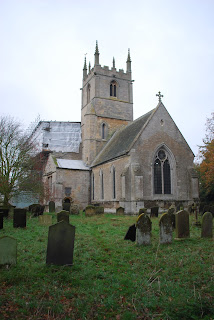
St Michael's is a medieval church near Boston in Lincolnshire.
The nave, aisle and tower roof were covered by lead sheet. At the time of my visit the church had undertaken to replace the copper covering with new lead sheet. The copper sheet had been removed prior to my visit, however this gave good opportunity to examine the state of the timber roof below. The tall aisle walls allow the nave roof to continue uninterrupted over the aisles.
The copper roof had been laid in a traditional method with standing seams. Problems had started with cracks forming along the edges of the sheet along the seams. This lead to a number of water leaks. Repairs had been attempted by the application of adhesive tapes and mastic. Eventual failure of these repairs and with additional cracks forming meant that continuing with this form of repair was unsustainable. In addition some areas of the roof covering were starting to lift. This may be due to uplift from the prevailing wind passing over the ridge and parapets. A number of the copper fixing nails had been found to have failed.
Having decided that the copper covering needed to be replaced lead sheet was specified for the new covering. This was supported by English Heritage as the church had been covered by lead sheet prior to the copper being laid in 1957.
The architect for the church is Peter McFarlane who guided me around the works. The contractor for the repair works and lead sheet roofing is W. Howlett & Sons.